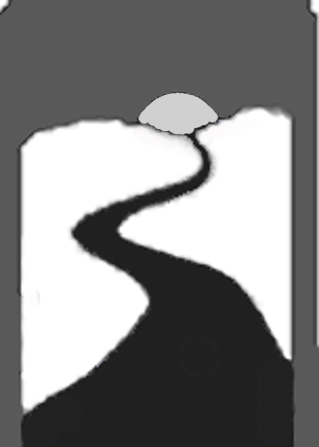Several years ago I convinced good friend and Metrofeits designer/builder Jamie Nichols to help me get ready for my first transcontinental ride with a nine day tour. It was the beginning of March and the planned route was a roundabout one from our house in Portland to Bagby Hot Springs, past Timothy Lake through the Mount Hood national forest and eastward up to the high desert, then north past the east side of Mount Hood and back to Portland along the Columbia Gorge.
When the week’s weather forecast showed a series of raincloud-filled panels we shrugged. The temperature was supposed to stay in the low fifties, and we figured rain was par for the course in a Portland spring. We checked our rain gear and kept packing.
We set off in the drizzle, which quickly turned to a steady rain. On the second day we discovered that the only roads out of the national forest were still snowed in, so after enjoying an overnight soak at the Bagby we backtracked into the more accessible Columbia Valley. After the hot springs we rode six consecutive days through intermittent to constant rain; ever cold, weary, and wet. By the second night all of our gear was thoroughly soaked. Each night’s campfire was a dreaded repeat of the last, with one of us cursing and spitting as he blew desperately onto damp, reluctant embers while the other coughed and rubbed smoke-stinging eyes from his previous turn. When the whiskey ran out the quarreling began. Riding or still, each day of that tour was colder, wetter, and more difficult than the last. On the final morning of the tour the clouds finally parted and we basked in spring sunshine. The day turned gloriously warm, and we fixed banners of damp clothes to the backs of our bikes to air-dry as we rode. The contrast from the previous week had us grinning from ear to ear, as we meandered north along farm roads toward home.
I still remember how wonderful if felt to sit in front of the fireplace in a dry change of clothes. To be totally dry for the first time in over a week. We were thankful survivors of a springtime adventure gone dismally awry. The lesson was well taken– I haven’t set off into a rainy forecast since.
 That being said, dry off-season weather offers cycle touring opportunities aplenty. Granted, the rides will be shorter (because winter weather is unpredictable) and more spontaneous/sporadic (because nice winter weather doesn’t tend to give much notice). Shorter days also mean shorter distances ridden and colder temperatures mean heavier, warmer gear- but the hearty bicycle camper can be rewarded by less traveled roads, silent landscapes, late and dramatic sunrises, gorgeous golden daylight (fantastic photographs), and serene seasonal campgrounds that have already been closed to cars. (I do not condone the unauthorized use of closed and completely deserted state or national forest campgrounds, even though a cyclotourist could easily navigate past a closed gate and enjoy the very best camp site, ample firewood, and complete solitude in some of the most beautiful settings in the country, with little worry of being discovered or bothered by anyone.)
That being said, dry off-season weather offers cycle touring opportunities aplenty. Granted, the rides will be shorter (because winter weather is unpredictable) and more spontaneous/sporadic (because nice winter weather doesn’t tend to give much notice). Shorter days also mean shorter distances ridden and colder temperatures mean heavier, warmer gear- but the hearty bicycle camper can be rewarded by less traveled roads, silent landscapes, late and dramatic sunrises, gorgeous golden daylight (fantastic photographs), and serene seasonal campgrounds that have already been closed to cars. (I do not condone the unauthorized use of closed and completely deserted state or national forest campgrounds, even though a cyclotourist could easily navigate past a closed gate and enjoy the very best camp site, ample firewood, and complete solitude in some of the most beautiful settings in the country, with little worry of being discovered or bothered by anyone.)
Tips for an off-season tour:
1. Be prepared.
Always take everything you’ll need to handle worst-case weather. You’ll need gear for cold/wet biking and camping, even if the forecast is clear. Unexpected rain can make hypothermia a real danger. Likewise, snow and freezing rain can quickly immobilize a bicycle, even with all-terrain or winter tires.
2. Dress for wet weather.
The greatest danger in cold-weather camping isn’t the cold, it’s moisture. Avoid cotton clothing and down coats and sleeping bags. Wool and synthetic materials do a much better job of retaining warmth when they’re wet.
3. Light your bike.
Short winter days make it much more likely that you’ll get caught in the dark. Have bright battery lighting or better yet hub-generated lighting– and back up your lights with a good headlamp, and extra batteries.
4. Test your set-up in the yard.
It’s hard to know what’s warm enough until you’ve made it through the night. Spend a few cold nights camping in your back yard before you venture out by bike. A minor oversight just outside the house can be a life-threatening one when you can’t get indoors.
5. Bring plenty of food, and water.
Anything can happen. Have at least an extra full day’s worth of dried food on hand. Also, a large insulated thermos will keep drinking water from freezing overnight.
